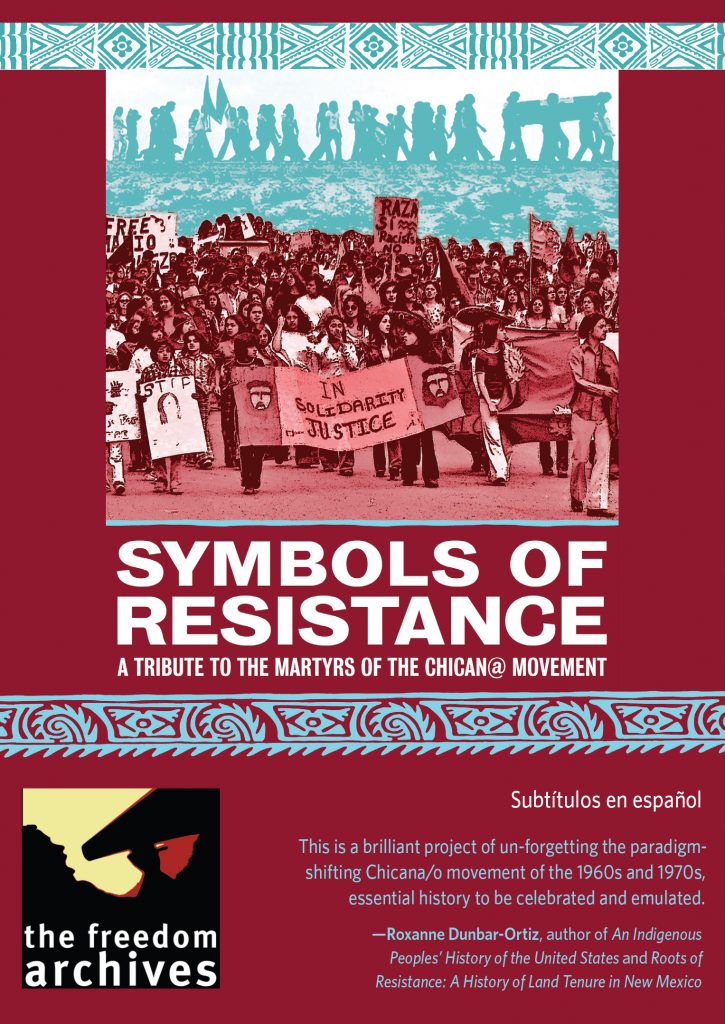By Ron Jacobs
CounterPunch
December 1st, 2017
The moment I first became aware of the Chicano movement for land and liberation was upon hearing about Reies Lopez Tijerina’s takeover of a courthouse in rural New Mexico. This was in 1969 during a conversation with a Chicano GI. Soon afterwards, the movement led by Cesar Chavez to unionize the farmworkers was introduced to the US military in the form of a boycott of grapes from the California fields being organized. What this meant for military men and women was that boycott organizers worked to get the military to stop buying grapes in the military mess halls and selling them in their commissaries. My recollection is that the military refused to accept those terms but that the organizing around the boycott convinced many military members to boycott the product on their own. This scenario played out in a similar manner when lettuce was also added to the boycott list. Anyhow, back to my GI friend. It was this same GI who introduced me to the Chicano@ antiwar movement, specifically the 1969 August moratorium protests—an event that saw brutal police repression and the murder of a popular left-leaning Los Angeles television reporter named Ruben Salazar. (Hunter S. Thompson and his attorney, Oscar Zeta both wrote about these protests in the months that followed.)
These particular protests and personalities were but the tip of an iceberg when it came to the Chicano movement for land and rights. This fact becomes quite clear in the newly-released documentary film titled Symbols of Resistance: A Tribute to the Martyrs of the Chicano Movement. Produced via the San Francisco, CA.-based Freedom Archives, the film uses a conference organized by young and old activists to commemorate the 40th anniversary of the still unsolved murders of six Chicano activists who became known as Los Seis de Boulder (Boulder Six) that was held in Boulder, CO. in 2014 as its springboard. Besides honoring the fallen fighters for which the conference was held, the film provides the viewer with a concise history of the Chicano movement in the United States. It combines speakers, poets, and musicians filmed at the conference in 2014 with interviews of some of the principles.
Then there is the clincher: a wealth of historical imagery from various personal, public and other archives. It is this imagery that gives this important film substance. Indeed, it brings to life the stories of men and women who made up Los Seis de Boulder (six young people killed in a series of bombings), of Ricardo Falcon who was murdered by a right-wing racist from George Wallace’s white supremacist anti-immigrant American Independence Party, and the struggles of the foot soldiers in this movement across the US west.
In the commentary that accompanies the stories from the past, the viewer is reminded of today’s battle around Latin American immigrants and Chicano citizens; the vicious hatred of anti-immigrant/anti-Latino groups and the self-serving politicians who cater to that hate. They are also reminded of the broader history of the American West, beginning with its roots as indigenous land and then land claimed by the Spanish crown before Washington took it over. One interviewee reminds the viewer, that given this history it is the US border that is illegal, not the Mexican one. Another important aspect of this history is the political connection that developed between the more militant elements of the Chicano movement and the American Indian Movement, especially during the period of the 1973 Wounded Knee standoff between the US government and Native Americans.
This film is many things. It is a tribute to a time and a movement. It is a history of a people. It is a useful springboard for a discussion that remains as relevant today as the period it reflects upon and portrays. It is a memorial to those who fought and died in the name of liberation and justice. Perhaps most importantly, it is a reminder that struggles for justice demand determination and commitment, and sometimes even lives. Join the debate on Facebook More articles by:Ron Jacobs
Ron Jacobs is the author of Daydream Sunset: Sixties Counterculture in the Seventies published by CounterPunch Books. His latest offering is a pamphlet titled Capitalism: Is the Problem. He lives in Vermont. He can be reached at: [email protected].







